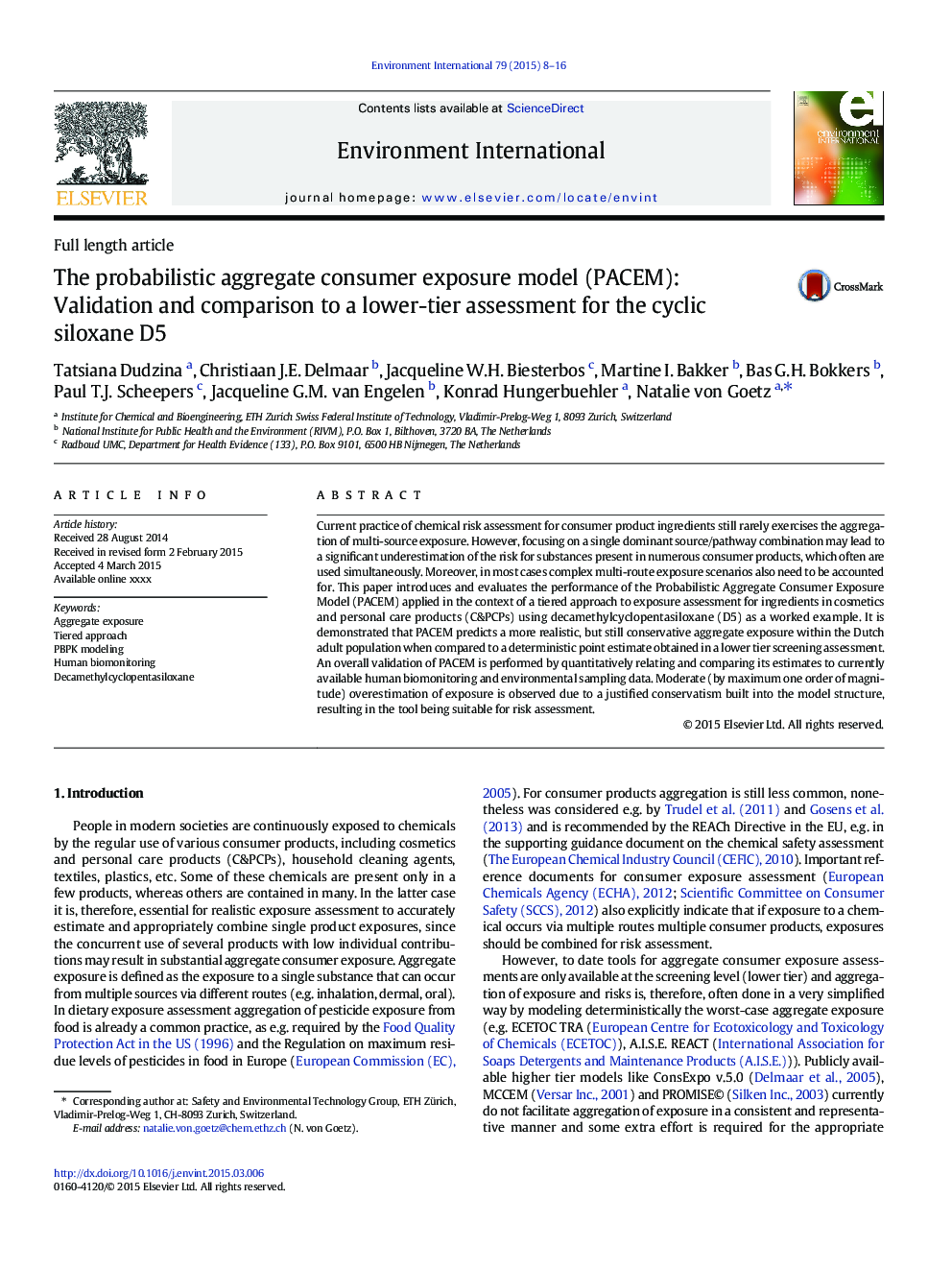| Article ID | Journal | Published Year | Pages | File Type |
|---|---|---|---|---|
| 6313643 | Environment International | 2015 | 9 Pages |
Abstract
Current practice of chemical risk assessment for consumer product ingredients still rarely exercises the aggregation of multi-source exposure. However, focusing on a single dominant source/pathway combination may lead to a significant underestimation of the risk for substances present in numerous consumer products, which often are used simultaneously. Moreover, in most cases complex multi-route exposure scenarios also need to be accounted for. This paper introduces and evaluates the performance of the Probabilistic Aggregate Consumer Exposure Model (PACEM) applied in the context of a tiered approach to exposure assessment for ingredients in cosmetics and personal care products (C&PCPs) using decamethylcyclopentasiloxane (D5) as a worked example. It is demonstrated that PACEM predicts a more realistic, but still conservative aggregate exposure within the Dutch adult population when compared to a deterministic point estimate obtained in a lower tier screening assessment. An overall validation of PACEM is performed by quantitatively relating and comparing its estimates to currently available human biomonitoring and environmental sampling data. Moderate (by maximum one order of magnitude) overestimation of exposure is observed due to a justified conservatism built into the model structure, resulting in the tool being suitable for risk assessment.
Keywords
Related Topics
Life Sciences
Environmental Science
Environmental Chemistry
Authors
Tatsiana Dudzina, Christiaan J.E. Delmaar, Jacqueline W.H. Biesterbos, Martine I. Bakker, Bas G.H. Bokkers, Paul T.J. Scheepers, Jacqueline G.M. van Engelen, Konrad Hungerbuehler, Natalie von Goetz,
